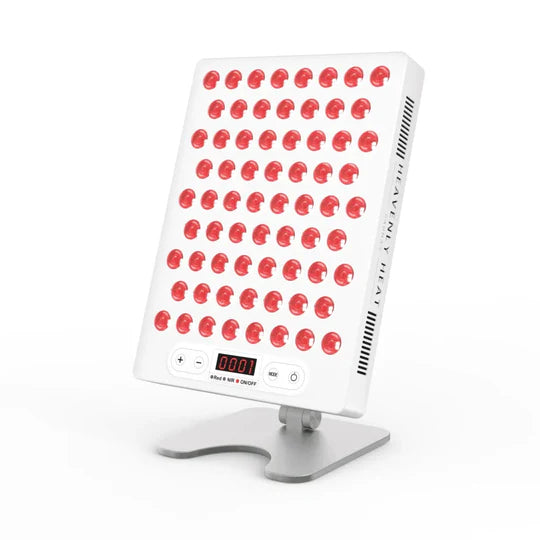Are Ice Baths Safe? 10 Safety Tips You Should Follow

Ice baths are gaining popularity for their ability to reduce muscle soreness, improve circulation, and boost recovery.
But are they safe? Many wonder if the potential risks, like hypothermia or shock, outweigh the benefits.
The truth is, while ice baths can be incredibly effective, improper use can lead to serious health concerns.
Don't worry, though! We've gathered 10 essential safety tips to ensure you can enjoy the benefits of ice baths without putting your health at risk.
Why It's Important to Stay Safe When Using Ice Baths?
Ice baths can be helpful, but staying safe is super important. Jumping in without getting ready can lead to serious problems like frostbite, hypothermia, or even shock.
If you start shivering a lot, feel numb, or have trouble breathing, get out right away, it’s not worth the risk.
Thinking about trying ice baths? Talk to your doctor first, especially if you have any health issues. A quick check can make sure it’s safe for you to try.
10 Tips for Staying Safe When Taking Ice Baths
Start Slow and Gradually Increase Duration
Begin with short ice baths lasting just a couple of minutes and slowly increase the time over weeks. "Working towards your goal slowly is the way to go," says Dr. Tracy Zaslow, a sports medicine physician in Los Angeles.
Don’t Stay in the Ice Bath Too Long
Avoid staying in an ice bath for too long. Dr. Peter Attia advises keeping your session around three minutes at a chilly 34°F to stay safe and gain benefits.
Dr. Kelly Starrett, a renowned physical therapist, also recommends short plunges for reducing inflammation and boosting energy.
Overdoing it can lead to numbness or even cold shock. Stick to a few minutes for a refreshing and safe experience.
Don’t take hot shower immediately after the ice bath
Don’t jump into a hot shower right after an ice bath, says Dr. Tracy Zaslow.” Instead, change into warm, dry clothes and drink something warm.
A hot shower can dilate your blood vessels too quickly, potentially causing you to faint”.
Don't Take an Ice Bath Alone Especially If You're a Beginner
Taking an ice bath alone can be dangerous, especially if you're new to it. Sudden chills or dizziness might hit, leaving you helpless without someone to assist.
Always have a buddy nearby to ensure your safety during this challenging experience.
Pay Attention to How Your Body Responds to cold
When you take an ice bath, pay close attention to how your body feels. If you start to feel numb, shiver uncontrollably, get dizzy, or have trouble breathing, it’s time to get out right away. Warm up slowly and call a doctor if the symptoms don’t go away.
Warm up your body After an ice bath
Warming up after an ice bath is really important to help your body return to its normal state. It helps your blood flow properly and reduces muscle stiffness.
To warm up, try stretching gently, moving around slowly, or wrapping yourself in a blanket.
Don’t jump straight into a hot shower or use intense heat, as it can shock your system and cause discomfort.
Being aware of your health
Ice baths aren’t for everyone. People with heart conditions, High blood pressure, circulation problems, or nerve disorders should avoid them, as cold water can strain the heart and restrict blood flow.
Dr. Tracy Zaslow advises that “cold-water immersion is not a completely benign activity.” Always consult your doctor first to ensure ice baths benefit your health without causing harm.
Make sure the temperature is not too cold
When you take an ice bath, make sure the water isn’t too cold. The ideal temperature is between 50°F and 59°F (10°C to 15°C). Going colder can be too much for your body to handle.
To check the temperature, you can use a thermometer or dip your hand in the water. It should feel cold but not painfully uncomfortable.
Do breathe deeply
Breathing deeply in an ice bath is essential because it helps your body stay calm and reduces the shock from the cold. It keeps you from hyperventilating and helps you relax.
To do this, take a slow breath in through your nose, filling your stomach with air, then exhale through your mouth. Focus on your breath and stay steady to keep control of your body.
Avoid Alcohol
Drinking alcohol before an ice bath is risky. It can affect your balance and make it harder for your body to respond to the cold.
Staying sober helps you stay more aware of your surroundings and reduces the chances of accidents.
Conclusion
To wrap it up, ice baths can be a great way to recover, but only if you’re careful. By following these 10 safety tips, you can enjoy all the benefits without putting yourself at risk. Start slow, listen to your body, and don’t forget to warm up afterward. Stay safe, and ice baths will help you feel better and recover faster.







































